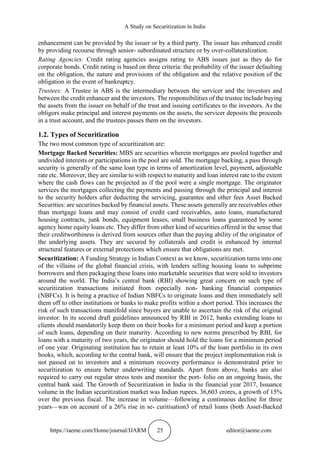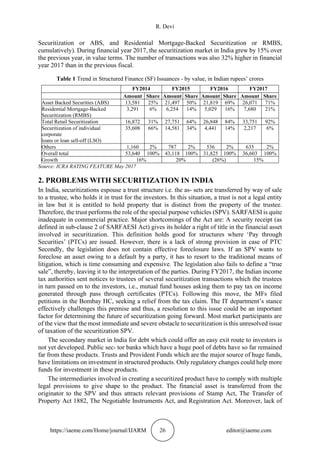The document discusses the concept and growth of securitization in India, highlighting its processes, types, and the role of various stakeholders including banks and special purpose vehicles (SPVs). It explains how securitization involves pooling assets to create marketable securities, while also addressing regulatory concerns and challenges in the Indian context, especially following the 2008 financial crisis. The paper indicates that despite a recent growth in the Indian securitization market, legal and tax issues remain significant barriers for further expansion.







